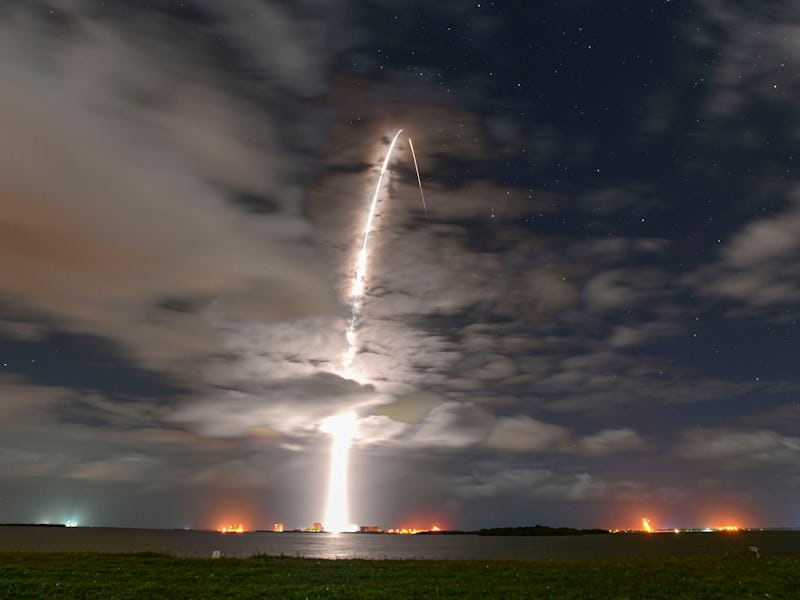SpaceX Starlink: How to spot in Seattle, Orlando, London
As Starlink makes its way across the night sky, lucky observers can see the new satellites.

Starlink, SpaceX's internet connectivity constellation, is making its way across the night skies. This week, fans in Seattle, Orlando, and London are best placed to catch a glimpse of the new satellites.
The sightings come as SpaceX continues to expand tests. During the November 25 launch of the sixteenth batch of Starlink satellites, engineer Kate Tice revealed plans to build on the ongoing beta test in a "notable way" early next year. Tice indicated the firm will expand the scope of the test around late January to February.
SUBSCRIBE TO MUSK READS+, A PREMIUM NEWSLETTER THAT COVERS THE WORLDS OF ELON MUSK, SPACEX, TESLA, AND EVERYTHING BETWEEN.
The comments run contrary to previous information SpaceX has put out about the test's progress. Starlink's website claims the company is targeting service in the northern United States and Canada in 2020, before moving onto near-global coverage of the populated world by 2021. It's unclear whether this expansion beyond the northern United States and Canada will carry the "beta" tag — Google's Gmail famously stayed in "beta" for five years. It finally dropped the tag in 2009.
Starlink aims to offer high-speed, low-latency internet service to almost anywhere with a view of the sky. The end-goal is gigabit speeds with response times in the tens of milliseconds. Early beta testers have so far reported speeds in the hundreds of megabits — impressive service compared to other satellite providers. But the speed and price — $99 per month plus $499 for the starter kit — means it can't compete with a ground-based connection.
The firm's impressive coverage stems from its many satellites, launched into orbit closer to the Earth than traditional satellite internet services. Current craft orbit at 550 kilometers altitude. SpaceX has launched 16 batches of around 60 satellites each so far, but it's applied for permission to launch up to 42,000 in total.
SpaceX's 16th Starlink batch lifting off.
The website FindStarlink tracks these satellites moving overhead. These sightings aren't always welcome, and SpaceX is working with the astronomical community to reduce their visibility. That means newer craft may be harder to spot.
With that in mind, here's where you may be able to see Starlink in the sky this week:
SpaceX Starlink: when and how to see in Seattle
All times are in Pacific time.
- Monday, November 30, 5:56 p.m.: The satellites should be visible for five minutes. Look from west to north.
- Wednesday, December 2, 5:32 p.m.: The satellites should be visible for five minutes. Look from northwest to northeast.
- Thursday, December 3, 6:09 p.m.: The satellites should be visible for five minutes. Look from northwest to north.
SpaceX Starlink: when and how to see in Orlando
All times are in Eastern time.
- Monday, November 30, 6:45 p.m.: The satellites should be visible for four minutes. Look from southwest to south.
- Wednesday, December 2, 6:23 p.m.: The satellites should be visible for five minutes. Look from south to east.
- Thursday, December 3, 6:58 p.m.: The satellites should be visible for five minutes. Look from southwest to northeast.
SpaceX Starlink: when and how to see in London
All times are in Greenwich Meantime.
- Monday, November 30, 4:41 p.m.: The satellites should be visible for six minutes. Look from southwest to east.
- Tuesday, December 1, 5:17 p.m.: The satellites should be visible for six minutes. Look from west to east.
- Wednesday, December 2, 5:53 p.m.: The satellites should be visible for six minutes. Look from west to north.
- Thursday, December 3, 4:53 p.m.: The satellites should be visible for six minutes. Look from west to east.
This article was originally published on